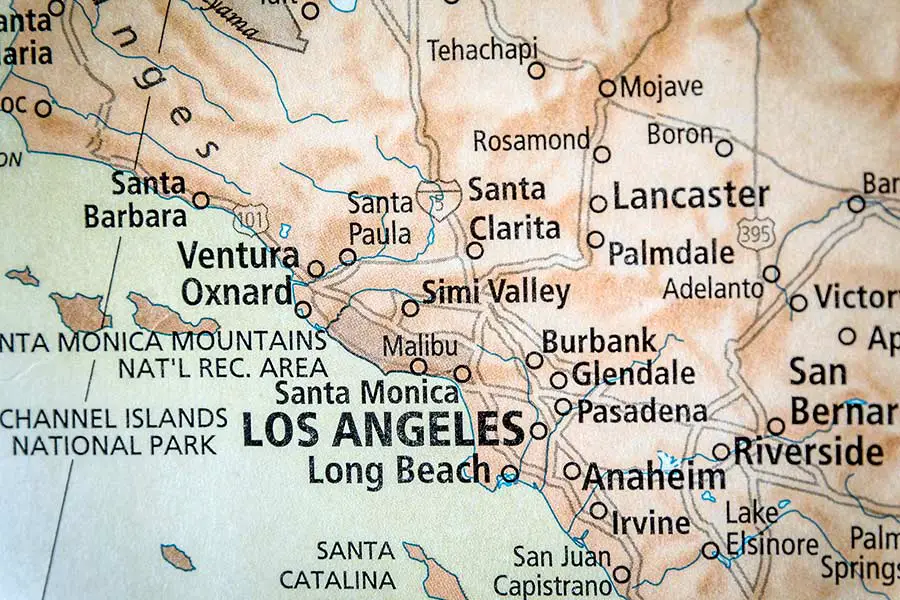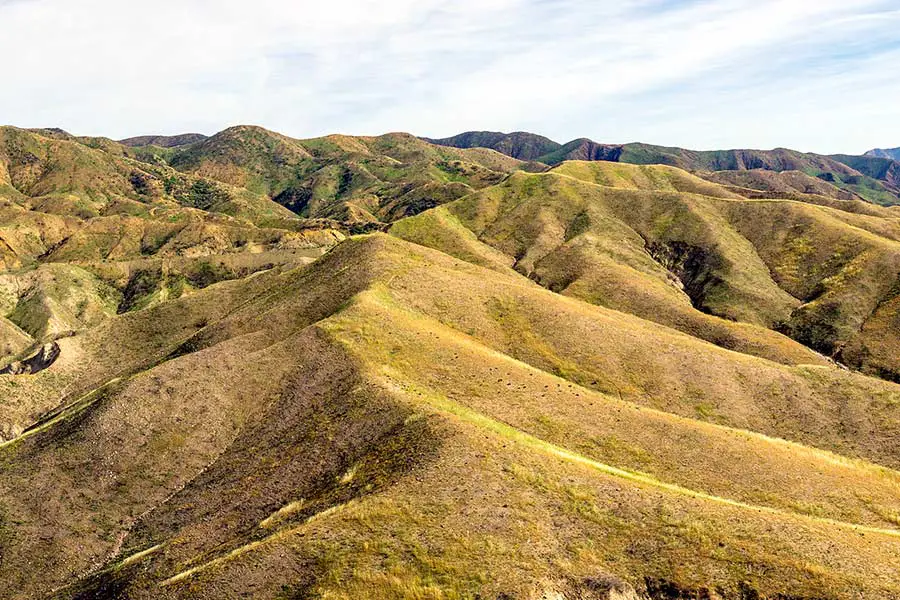
Like many parts of the world, the State of California is susceptible to natural disasters and other weather phenomena. Most people are not surprised to hear about earthquakes or wildfires in the news. However, there are other lesser-known weather patterns that are unique to California, such as the Santa Ana Winds that occur when the conditions are just right. If you plan to visit or move to California, you might be wondering, which cities are affected by Santa Ana Winds?
Santa Ana Winds affect a large number of cities and communities in Southern California. The cities most likely to experience Santa Ana Winds are those that sit west of the mountain ranges of Los Angeles, Orange, and San Diego counties, like Los Angeles, Anaheim, Huntington Beach, and San Diego.
The Santa Ana Winds are capable of producing devastating effects throughout Southern California. It’s important to understand how to protect yourself and your property from potential harm or damage. Continue reading for more information on how Santa Ana Winds form, when they are likely to strike, and the impact they have on the local community.
Cities Affected by Santa Ana Winds
The Santa Ana Winds are powerful winds that affect much of Southern California. Most people incorrectly assume that the Santa Ana winds only impact the City of Santa Ana, located in the heart of Orange County. However, the affected areas include most cities in the coastal regions of Southern California in Los Angeles, Orange, and San Diego counties.
The largest cities usually impacted by the Santa Ana winds include Santa Barbara, Los Angeles, Long Beach, San Bernardino, Irvine, Santa Ana, Chula Vista, Huntington Beach, San Clemente, and San Diego, along with dozens of other smaller coastal cities. The winds even reach as far south as Tijuana in Baja California, Mexico. Depending on the direction and strength of the storm, up to 17 million Americans can be impacted by Santa Ana Winds.
What Causes Santa Ana Winds in Southern California?
Santa Ana Winds are known as katabatic winds, which are a result of high air pressure at high elevations that flow downward rapidly toward sea level. The word “katabatic” is a translation from the Greek word for “descending.”

As pressure over the Mohave Desert increases, the air follows the path of least resistance. This path is typically toward lower-pressure coastal regions. With little to no resistance, the winds can quickly gain speed as they approach the ocean.
In addition to speed, the air temperature usually increases by 5 degrees for every 1,000 feet it descends. By the time the air reaches the ocean, the wind is warm and dry. In many cases, Santa Ana winds are accompanied by a heatwave. If you don’t mind being out in a bit of wind, this usually brings the best beach weather.
How Strong are the Santa Ana Winds?
The Santa Ana Winds can easily exceed a sustained speed of 40 miles per hour. However, wind gusts can accelerate as air is forced through narrow mountain valleys resulting in short bursts of wind that can reach 100 miles per hour (which is equivalent to a Category 2 hurricane).
Most California residents are aware of the potential damage that can occur from Santa Ana Winds and take steps to secure items like canopies and outdoor furniture when high winds are on the weather forecast.
Bay Area Answers Fun Fact: The fastest Santa Ana Winds ever recorded was in Pasadena and Altadena in 2011. The cities experienced sustained winds of 97 MPH with bursts up to 167 MPH.
When Do the Santa Ana Winds Occur?
The Santa Ana Winds can occur at different times throughout the year. However, the winds are most common from October to March, with a peak in December. The beginning of the Santa Ana Wind season is usually marked by an unusually hot weather streak in late September to early October. During this time, the temperatures in coastal Southern California can exceed those in the desert. It’s possible for temperatures to exceed 100 degrees Fahrenheit, even near the ocean.
It’s important to note that while Santa Ana Winds typically bring warm weather, they can also blow cold, bringing unusually cold temperatures. In either case, most extreme temperatures in Southern California can be connected to the Santa Ana Winds.
The Santa Ana Winds occur approximately 20 times every year, with each windstorm lasting 12 to 24 hours at a time. More significant storms can go on for several days, but these are less common.
Other Posts of Interest
- What Is California’s Largest Island?
- What Is Mavericks Beach In California Famous For?
- Is Golden Gate Park Bigger Than Central Park?
- Are California Mountain Lions Endangered?
Why Do They Call Them the Santa Ana Winds?
While the Santa Ana Winds can be experienced across much of Southern California, the winds are stronger as they pass through narrow canyons on their way from the desert to the ocean.
One of the canyons where the strongest winds are experienced is in the Santa Ana Canyon, which is where the Santa Ana River passes through the Santa Ana Mountains, hence the name. This canyon is located near the city of Chino Hills, where Orange, Riverside, and San Bernardino Counties meet.
Are the Santa Ana Winds Stronger at Night?
As hot air rises over Southern California during the day, air from the Pacific Ocean is pulled inland, creating ocean breezes. These winds from the ocean typically blow in the opposite direction of the Santa Ana Winds. This competition frequently lessens or equalizes the pressure from the Santa Ana Winds.

However, at night, the winds from the ocean subside, which allows the Santa Ana Winds to blow stronger. As a result, it’s pretty common for California residents to wake up to large branches in their yard or scattered patio furniture.
Do Santa Ana Winds Cause Wildfires?
The State of California is known for experiencing massive wildfires. While many wildfires result from human activity and dry conditions, the Santa Ana Winds play a role in increasing the severity and frequency of wildfires.
The fast, hot air that is produced by the Santa Ana Winds can dry out vegetation making them more flammable, bring down powerlines, and carry sparks from campfires. The winds also make it more difficult for firefighters to fight wildfires. In addition, the high wind speeds can help fan the flames and cause the fire to spread more rapidly.
One of the most destructive wildfires in Southern California history was the Thomas Fire in 2017. This fire was accelerated by the Santa Ana Winds burning over 280,000 acres in Santa Barbara and Ventura Counties. The fire resulted in 23 deaths (2 from the fire itself and 21 from mudslides in Montecito as a result of the fire) and cost over $2.2 billion in damage.

Can the Santa Ana Winds Cause Health Problems?
Some people have been known to experience health problems as a result of the Santa Ana Winds. The most common symptoms are changes to mood, nausea, migraines, and breathing problems. The winds can also help to spread dust and pollen, which can affect people with allergies.
Are the Diablo Winds the Same as the Santa Ana Winds?
Northern California (specifically around the Bay Area) experiences the same weather phenomenon that creates the Santa Ana Winds. The only difference is that they are referred to by a different name — Diablo Winds.
Like Santa Ana Winds, Diablo Winds can cause a lot of damage, disrupt flights, cause power outages and increase the risk and spread of wildfires.
These wind systems aren’t just limited to California. In addition, winds are given different names for the specific region or country in which they are located. For example, when formed over the Rocky Mountains, these winds are referred to as Chinook Winds.
Understanding the Risks for Visitors
Generally, visitors to the State of California have little to worry about when it comes to Santa Ana Winds. The most significant risk is wildfires. So if you are spending any time hiking or biking during a Santa Ana Windstorm, be alert for any signs of smoke or wildfire.
If you see any signs of a fire, you should leave the area immediately. It is worth noting that wildfires can travel up to 6 miles per hour in areas that are wooded and reach 14 miles per hour through grasslands, so don’t take the risk of assuming that a fire is too far away to be a danger.





